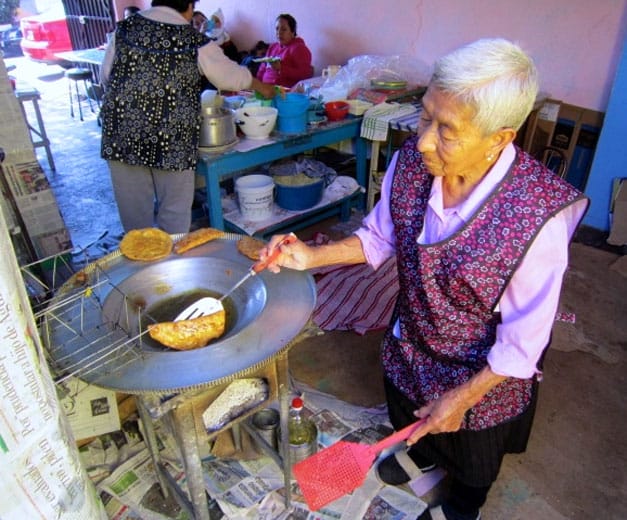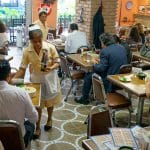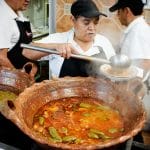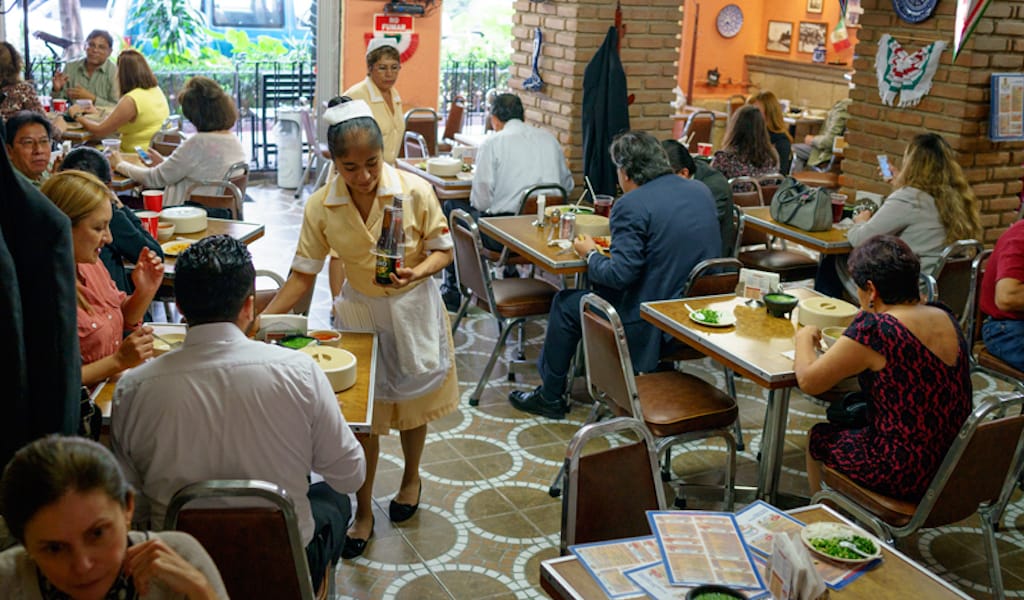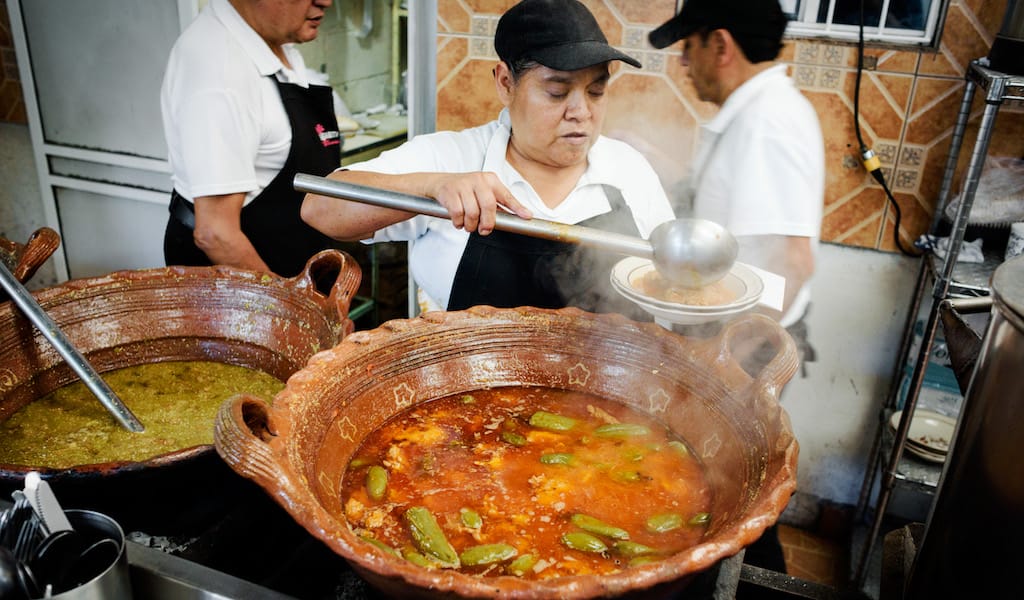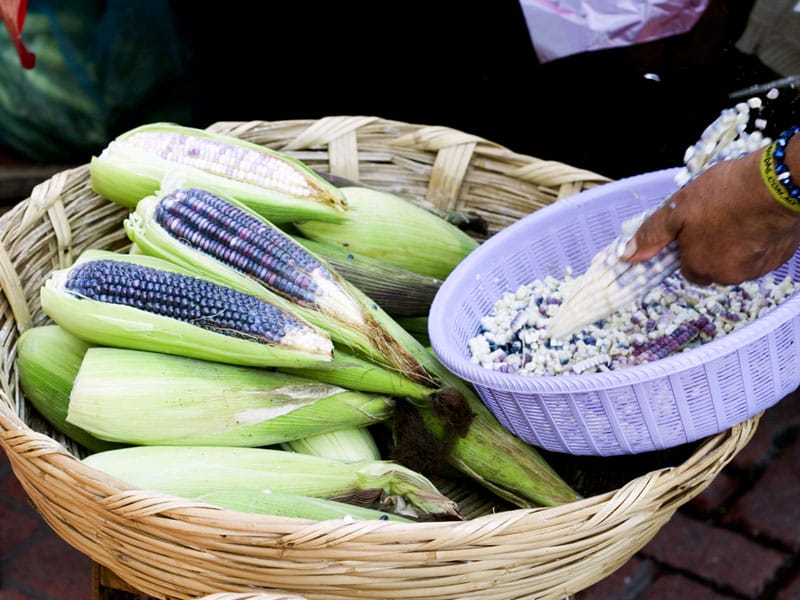There’s a funny feeling you get in Mexico City when you come back to a neighborhood you both remember and forget. Food here gets that way, too. “You know that one quesadilla joint, that one time, with the good salsa.”
“Oh that place, yeah. With the blinky light bulbs and the plastic chairs.”
“Where the hell was that?”
Often the answer is “near that one metro station,” or you might remember roughly where it is, but forget when it’s open – only on weekends, only after 10 p.m., only before 10 a.m., only on holidays, etc.
Sometimes, though, time catches up with us, or at least with the nostalgia-driven hunger of our comrades-in-arms.
We are so glad our friend Liz dragged us to Colonia Daniel Garza, a little neighborhood often overshadowed by being in the least hip southwest quadrant formed by the Periférico beltway and Avenida Constituyentes, both oppressively traffic-heavy corridors, to hit up a haunt only blocks away from her father’s childhood home.
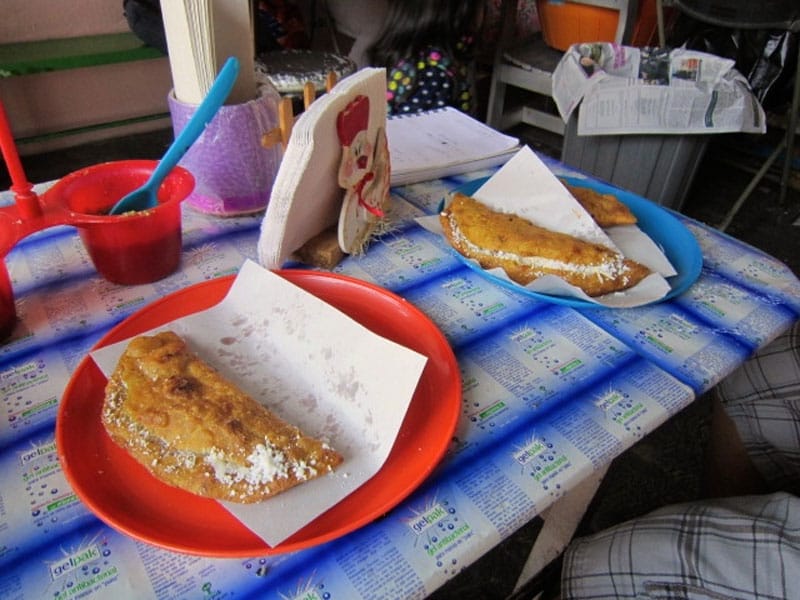
“What the hell,” we said, as we walked into a family-home-adjacent garage with makeshift furniture – a 50-year-old quesadilla and sope establishment. It took about one minute to be hooked.
“This is one of my first memories,” Liz told us.
As she said this, we carefully considered the delicacy in our hands, looking at how the dough was blistered with just enough oil – somehow not greasy, somehow not burnt. For someone looking for the correct amount of crispness as a function of oil – no stain, hold-in-hand truth – this place is a godsend.
The eatery is essentially a bunch of chairs, a couch and a few tables in the garage of a family home, open only on weekends, from roughly 10:30 a.m. until they feel like stopping or until the guisados (in our native U.S. South, we’d call these fixins) run out for the day – which is to say, usually 4 or 5 p.m.
The lovely Pachita, quietly patting corn dough into shape and throwing the filled goods in the little fryer in the back, absolutely knows what she’s doing. She’s been at it for 43 years, by far the larger part of the 50-year existence of the place, now working with her daughter, Carmelita, who handles the fillings and the customers. The place really doesn’t have a name; the locals simply call it Doña Pachita’s.
If you take corn dough, mush and pat it flat with your hands, lay various filling concepts in there, wrap it into a crescent, cut off the edges and drop it in searing-hot oil, you find yourself making one of two major styles of quesadilla – or queka in the colloquial – among the prevailing philosophies here.
Looking at the fillings, you have your meaty guys – beef and chicken cooked straight-up, spicy ground beef (picadillo), seasoned chicken (tinga), stewed pigskin (chicharrón) or pork belly and tripe (panza) – and veggie friends – queso and hongos (mushrooms). These go into the quesadilla dough before frying or atop the already fried sopes – flat fried-corn-dough discs topped by beans, a bit of shredded white cheese (queso rallado) and said guisados. Liz’s favorite has been – since childhood – the picadillo, but she notes that the specialty really is the tripe, made more apparent watching cars pulling up for to-go orders of the stuff. Everything is deeply infused with epazote, an herb that not only adds a savory quality but also seriously aids in digestion and reduces gastric distress.
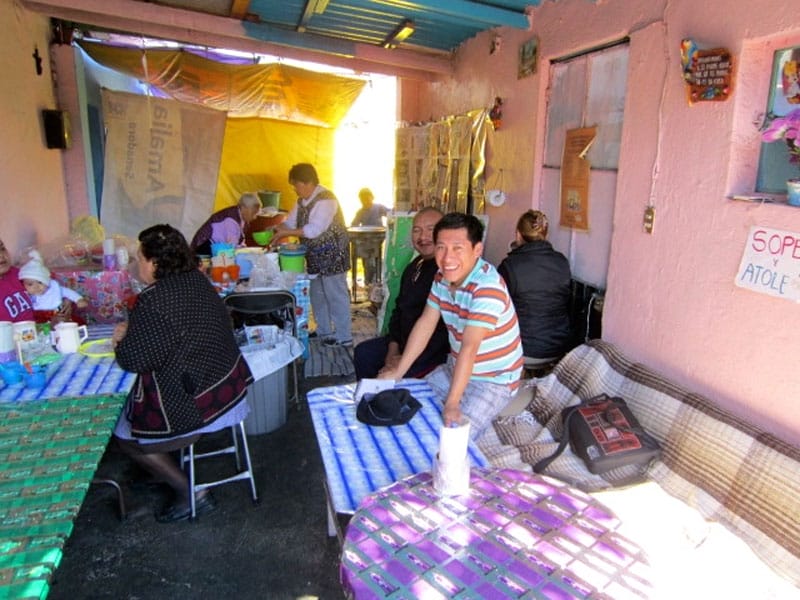
The mushroom and cheese quesadilla is crispy umami madness. You get the feeling on first bite that you can eat 10 of these, but around your third variation of this within the quesadillas and sopes you start hitting a wall, so just one more.
Everything here goes for 15 pesos, including the atole, a pre-Hispanic hot beverage, traditionally flavored with chilies and honey and made from corn dough, here prepared as a champurrado, which is infused with cacao-heavy chocolate. But if you have to bring in a water or something from the street, no one will say a thing.
This place, like so many others, is about offering hungry customers relief in the form of delicious food and not turning a big profit. It is as it was, and we hope it will remain for many years.
How to actually get there: On a map, look for the intersection of the Periférico and Avenida Constituyentes. A couple blocks south of Constituyentes, you will see Villegas. Look for Privada Morán, which is a dogleg alley to the longer Calle General José Morán, and look for where it crosses Villegas. From Metro Constituyentes you will have to travel west along the avenue, or if going through the neighborhood, look for a pedestrian bridge that crosses the Periférico to get to the other side. Consult a map, seriously.
Published on February 18, 2015
Related stories
February 23, 2023
Mexico CityIn a town that runs on tacos, tacos de guisado may be the most ubiquitous version of the iconic dish in Mexico City. They can be found almost anywhere in the city, from specialty restaurants to markets, tianguis and street vendors selling them at stalls or even out of the trunk of a car. It…
February 22, 2020
Mexico CityWith a simple façade, the unassuming Fonda Margarita sits next to a carwash and wouldn’t attract much attention if it weren’t for the line out the door and around the block by the time it opens at 5:30 a.m. Construction workers come at the crack of dawn, office workers arrive in shifts and sleepy teenagers…
March 22, 2013
Mexico City | By Ben Herrera
Mexico CityHumanity came from corn, or so says the Mayan creation story, the Popol Vuh. After creating the earth and animals, the story goes, the Maker decided to create beings in his likeness. After failing twice with dirt and wood, the Maker formed man and woman out of the “nourishing life” of ground corn. And so…







































